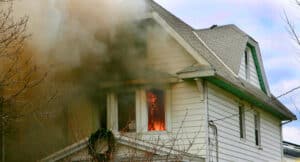
Winter in Bee Cave brings cooler temperatures, but that doesn’t always mean relief from dampness inside your home. In fact, condensation, limited ventilation, and sudden cold fronts can create the perfect environment for mold growth. Understanding how to prevent mold during the winter months helps protect both your property and your indoor air quality.
Why Mold Still Grows During Winter in Central Texas
Many homeowners assume mold is only a problem during humid summer months, but in Central Texas, mold can develop year-round. When indoor air is warm and humid while outdoor temperatures drop, condensation forms on windows, walls, and ceilings. This trapped moisture, combined with reduced airflow from closed windows and doors, allows mold spores to settle and grow.
Even small amounts of dampness from everyday activities such as cooking, showering, or drying clothes indoors can accumulate in winter. Over time, this leads to hidden mold growth behind walls, under flooring, or around HVAC systems.
Common Winter Mold Sources in Austin-Area Homes
Mold often forms in places that retain moisture or lack proper ventilation. In the Bee Cave and Austin area, where fluctuating temperatures and high humidity can occur even in winter, the following are common problem spots:
Windows and walls: Condensation collects on cooler surfaces, especially in rooms that receive limited sunlight.
Bathrooms and kitchens: Hot showers and cooking create steam that lingers without proper ventilation.
Attics and crawl spaces: Inadequate insulation or airflow allows humid air to build up and condense.
HVAC systems: Dirty air filters or poorly maintained ducts can circulate damp air and mold spores throughout the home.
Roof or plumbing leaks: Small, unnoticed leaks can keep surfaces wet for weeks, creating the ideal breeding ground for mold.
How Bee Cave Homeowners Can Prevent Winter Mold
The most effective way to prevent mold before it starts is to manage indoor air quality and limit areas prone to dampness. Homeowners can take several simple steps to prevent mold during winter:
- Keep indoor humidity below 50% by using a dehumidifier if needed.
- Run exhaust fans in bathrooms, laundry areas, and kitchens to remove humid air.
- Inspect for roof, window, or plumbing leaks after cold fronts or heavy rain.
- Add insulation in attics, basements, and crawl spaces to prevent condensation buildup.
- Replace HVAC filters regularly and schedule seasonal maintenance.
- Leave space between furniture and walls to promote air circulation.
Even with preventive efforts, mold can still develop in areas that are hidden from view. If you notice musty odors, discolored spots, or increased allergy symptoms, it’s important to schedule a professional inspection before the problem worsens.
Professional Mold Remediation in Bee Cave and Austin
At W.B. Arthur, our certified team provides comprehensive mold inspection, remediation, and cleanup services tailored to homes throughout Central Texas. We locate the source of dampness, safely remove contaminated materials, and use advanced drying and filtration equipment to restore healthy indoor conditions.
Our process adheres to industry standards for containment, air purification, and surface treatment, ensuring that mold is fully removed and prevented from returning. Mold prevention begins with awareness and proper maintenance, but if it does appear, our experts are ready to help.
W.B. Arthur offers 24/7 professional remediation services across Bee Cave, Austin, and surrounding Central Texas communities. If you suspect winter mold in your Bee Cave or Austin home, contact W.B. Arthur for a professional inspection and remediation plan today.



